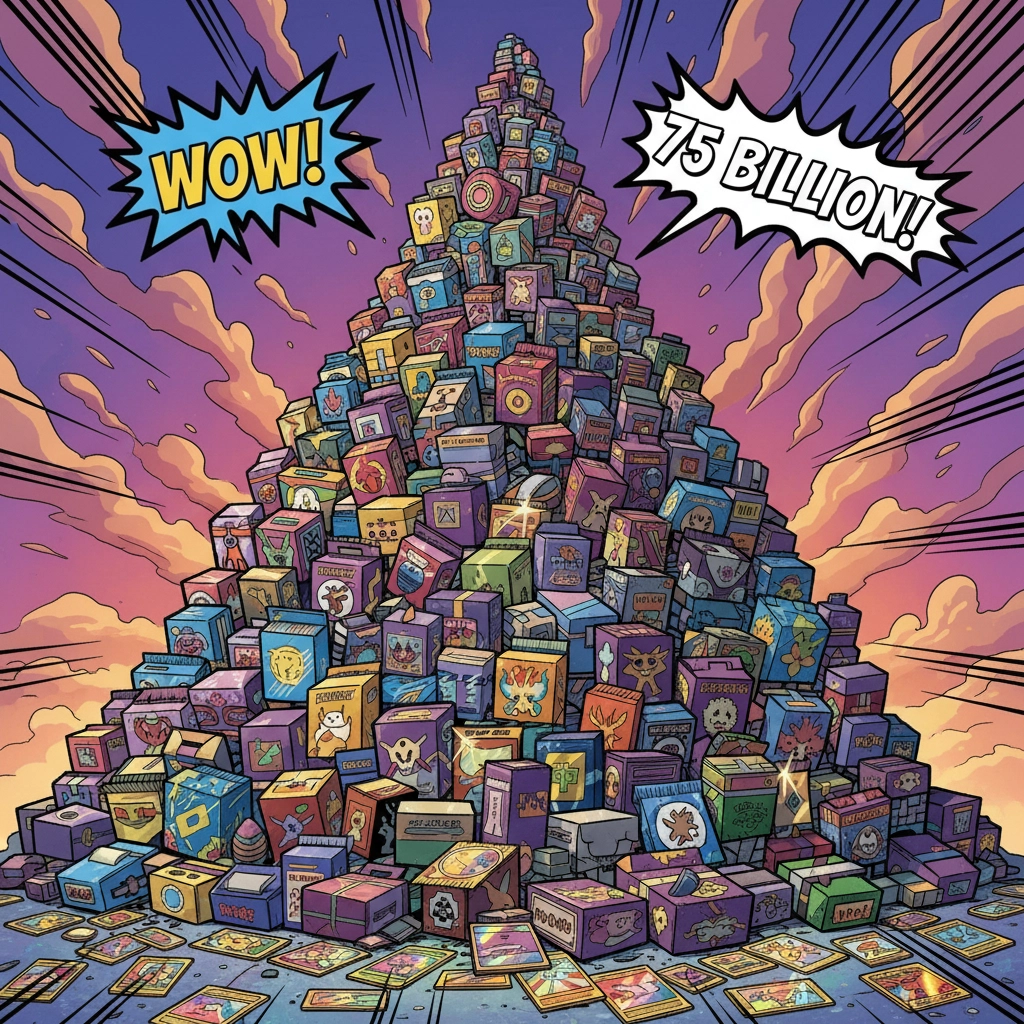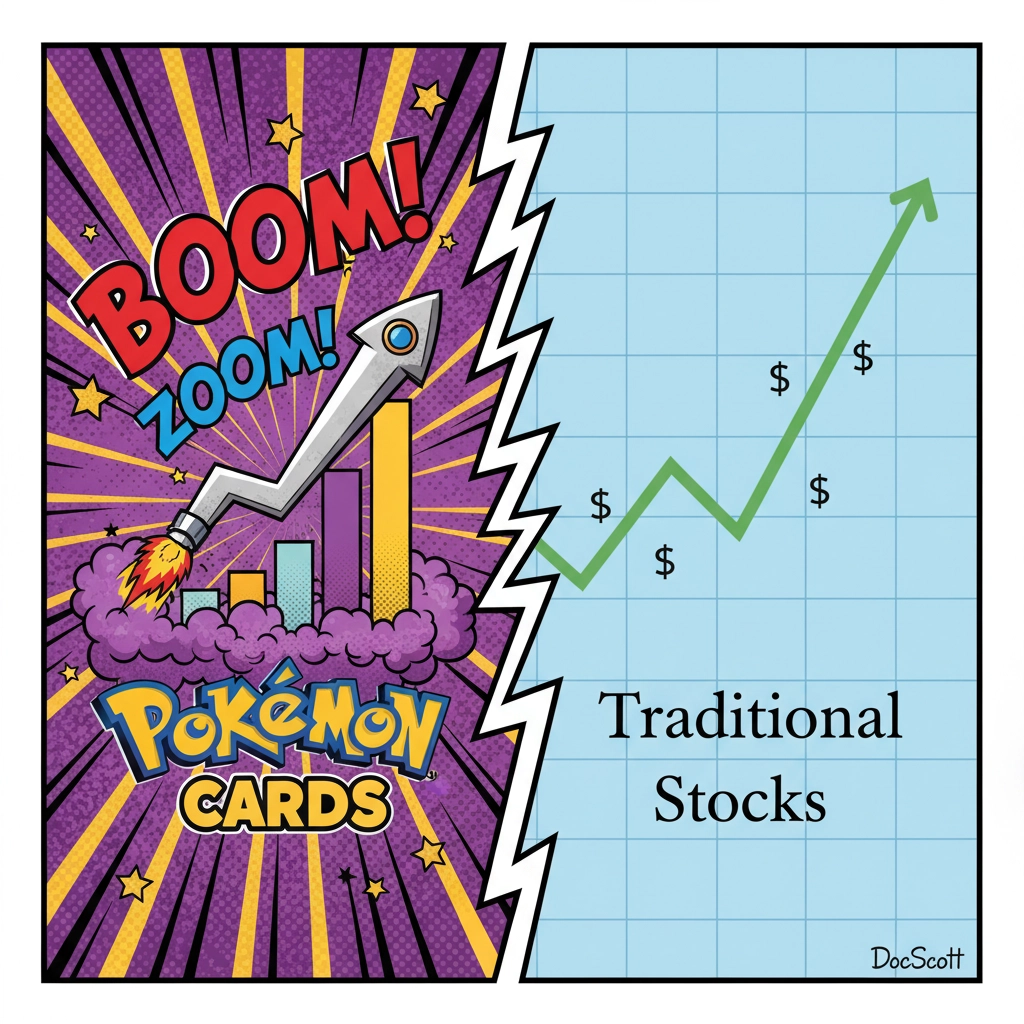If you've walked into a Target or Walmart lately, you've probably noticed something: the Pokémon card section is either completely cleaned out or there's a small crowd hovering around it. Sound familiar? It should, because we've seen this exact scenario play out in the sports card world multiple times over the past few years.
But here's the million-dollar question everyone's asking: Can the Pokémon craze actually sustain itself long-term, or are we looking at another bubble waiting to burst?
This Isn't Pokémon's First Rodeo
Let's get one thing straight: Pokémon has been through this dance before. We're actually looking at the franchise's fourth major boom cycle. The first hit in 1999 when kids (myself included) were trading cards at lunch tables across America. Then came the 2016 surge when Pokémon Go had adults wandering around parks catching Pikachu. The pandemic brought another wave as people rediscovered childhood hobbies and started viewing cards as investments.
Now here we are in 2025, and the numbers are pretty staggering. Since 1996, The Pokémon Company has distributed 75 billion trading cards worldwide. That's not a typo: 75 billion. To put that in perspective, that's roughly 9 cards for every person on Earth.

What's interesting is how each boom cycle has played out. Prices surge, everyone loses their minds, then things cool down: but here's the kicker: they don't crash back to where they started. Each cycle establishes a new, higher baseline. It's like the sports card market in that way, where cards might dip after a hot streak but rarely return to their pre-boom prices.
The Investment Angle (And Why It Matters)
Here's where things get really interesting for us in the collectibles world. Over the past year, the average Pokémon card has increased 46% in value. Over 20 years? We're talking about a 3,261% increase. That's the kind of number that makes even the most skeptical sports card collector take notice.
Gen Z and Millennial collectors are treating Pokémon cards like alternative investments, much like we've seen with high-end sports cards. The parallel is pretty obvious: both markets are driven by nostalgia, scarcity, and community engagement. Both have crossover appeal between pure collectors and investment-minded buyers.
But there's a crucial difference: Pokémon has something most sports don't: complete control over their content pipeline. The Pokémon Company doesn't depend on whether a player stays healthy or performs well. They can manufacture excitement through new releases, special editions, and strategic scarcity.
The Multimedia Machine
This is where Pokémon really separates itself from the pack. While sports cards rise and fall with player performance and seasonal interest, Pokémon operates across multiple entertainment channels simultaneously. Video games, TV shows, movies, merchandise: it's all interconnected.
The franchise has sold 489 million video games as of March 2025, and that success feeds directly back into card demand. When a new game drops and introduces cool new Pokémon, guess what happens to related card values? Meanwhile, the upcoming Pokémon Legends Z-A game is perfectly timed for the franchise's 30th anniversary in 2026, which is guaranteed to drive another wave of interest.

Compare this to sports cards, where we're always at the mercy of external factors: player injuries, team performance, league drama. Pokémon creates its own narrative and controls the release schedule.
Community and Culture Drive Sustainability
Here's something that often gets overlooked in the "is it a bubble?" debate: the community aspect. Pokémon cards aren't just collectibles; they're social currency. Kids trade them at school, adults bond over shared childhood memories, and collectors of all ages participate in tournaments and events.
This creates what economists call "network effects": the more people involved, the more valuable participation becomes for everyone. It's similar to what we see in sports card communities, but with broader appeal since Pokémon doesn't require any sports knowledge to appreciate.
The franchise is available in 9 languages and has genuine global reach in ways that even major sports can't match. While NFL cards might dominate in America, they're niche elsewhere. Pokémon? It's everywhere.
Warning Signs on the Horizon
Now, let's be real about the potential downsides. The current market intensity probably isn't sustainable indefinitely. We're seeing some classic bubble indicators: retail shelves stripped bare, people camping overnight for releases (seriously, this happened with the January 2025 Prismatic Evolutions expansion), and speculation driving prices more than genuine collecting interest.
Some market watchers are already calling for a cooling period, with predictions ranging from 6 months to 2+ years before the current frenzy moderates. The question isn't whether it will cool: it's how much and for how long.

There's also the risk that comes with any collectible market: oversupply. If The Pokémon Company gets too aggressive with reprints or special releases, they could dilute the scarcity that drives values. It's a delicate balance between meeting demand and maintaining exclusivity.
Comparing Notes with Sports Cards
As someone who's watched the sports card market cycle through multiple booms and busts, the parallels are pretty clear. Both markets are driven by:
- Nostalgia and emotional connection
- Scarcity and chase cards
- Investment potential
- Community engagement
- Media attention and celebrity endorsements
But Pokémon has advantages we don't always have in sports cards. They're not dealing with off-field controversies, retirement decisions, or performance slumps. Pikachu doesn't demand a trade or hold out for more money.
On the flip side, sports cards have the unpredictability and drama that keeps people engaged year-round. Every game matters, every season brings new storylines, and the best players become cultural icons that transcend the sport itself.
The Long-Term Outlook
So, can the Pokémon craze continue long-term? Yes, but probably not in its current fever-pitch form.
Here's what I think we'll see: The current speculative frenzy will eventually moderate, but the franchise will settle into a higher level of sustained interest than before this boom started. We're not going back to pre-2020 prices, just like sports cards didn't fully retreat after their pandemic surge.
The upcoming 30th anniversary provides a natural catalyst for continued interest, and the multimedia ecosystem means Pokémon can create its own momentum rather than depending entirely on market sentiment.
For collectors and investors, this probably means opportunity lies in strategic collecting rather than speculative flipping. Focus on genuinely rare cards, iconic characters, and first editions rather than chasing every new release.
The Bottom Line
Will Pokémon cards continue being hot? Almost certainly. Will they maintain current price appreciation rates forever? Probably not. But here's the thing: they don't need to.
What Pokémon has built is cultural staying power. It's a 30-year-old franchise that continues attracting new generations while maintaining its hold on previous ones. That's not bubble behavior; that's brand strength.
At DocScott Sports Cards, we've seen how collectible markets ebb and flow. The smart money isn't on predicting exact timing of peaks and valleys; it's on understanding long-term value drivers. And Pokémon has those in spades: cross-generational appeal, multimedia presence, controlled scarcity, and genuine cultural impact.
The craze might evolve, but it's not going anywhere. That yellow electric mouse has proven remarkably resilient over three decades. I'd bet on at least three more.
